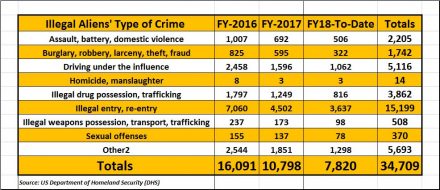Education Industry News & Opinion
By Eighty Six / Teaching Methods, Tools & Strategies
Source: Bright Hub Education
April 25, 2019 – Charter schools are small public schools independent of the school district. They receive public funding and do not charge tuition. Their students are held to the same academic standards as students in standard schools. Their faculties have more range to define the school in their own way.
A Little Background
They allow for greater teacher/parent interaction. A charter school can be established on a more specific platform than a regular public school. For example, a charter school may specialize in the performing arts, science, language immersion or special education.
Parents and students may choose to attend one of the charter schools in their area rather than the local public school, but currently the demand exceeds the supply. New applicants are chosen by lottery system. Currently 1 million students are waiting to enroll, up 275,000 from last year.
Charters can be malleable with their schedule. They can offer evening classes, longer days or summer sessions. Some schools have moved from the typical 9 months on/3 months off model to a 12 month school year with two week breaks throughout.
While many families find charter schools to be welcome alternatives to traditional public schools, the new establishments do have their critics.
Arguments against Charter Schools
Loss of funding: Schools are funded based on the number of students enrolled. Charters shrink the population, forcing schools already slim on resources to tighten their belts further. Maintaining facilities and upgrading for the future will be impossible for traditional schools. As a school official said: If you want to improve the road system, is it more logical to invest in existing roads or to build a set of parallel streets?
Loss of transparency and accountability: Charter schools are run by education management companies. They are not subject to the Freedom of Information Act. How they operate and handle their finances will not be open to public scrutiny. Furthermore, their school boards will not be publicly elected. They may add and remove board members as the company sees fit. The voters will have little recourse.
Less diversity: While charters cannot discriminate based on race, religion, economic class or anything else, they do target particular types of student by definition. This leads to an inevitable homogeny. Schools not positioned on bus routes can discriminate against low-income families unable to commute.
Schools populated with a particular type of student will likely stay that way if parents are unwilling to make their child part of the minority. Some of these differences do result from parental choice, but the broad spectrum of students present at a normal public school cannot be found at many charters.
Overworking teachers: Since charters are rewriting the book, educators often spend more time at work. Longer days and summer sessions demand more of the staff. Particularly, schools in their first year of operation require long hours from their faculty. Plus, charter schools pay on average 10 to 15 percent less to their teachers.
Arguments for Charter Schools
Options for students: One education style will never fit every student. Some respond better to smaller class sizes. Others excel in the big environment of traditional schools. If a student finds she doesn’t get along with a particular group of students, she can switch schools. Specialization may benefit some students. Schools having a regional monopoly is archaic.
Build competition: Having to be better than the next guy is good in every business. The same is true for education. When traditional schools lose population and therefore funding to charters, they have to respond by improving. Find out what the public wants and deliver it. A school filled with students who must go there has less incentive to deliver a great product.
Be modern: Technology is changing education. Wireless global communication requires forward-thinking educators and new equipment. Purchasing and implementing new devices is expensive and time-consuming for an entire school district.
Plus, schools are still learning how to do it right. A small charter school can do so at a lower cost and with new methods. Other schools can observe what they do and learn from it. Once successful, large traditional schools can use their techniques.
Cater to a niche: Normal public schools must be everything to everyone. Charters can focus on one education style, one type of student or one goal. Equipment, methods and staff can be specialized to hit the desired target. The resulting education will not be average, general or watered-down. It will be exactly what some of the district’s students need.
Empower teachers: The charter school environment encourages teachers to do new things. All the clay is still wet and the classroom can be molded in the teacher’s image. Management is not pressing the educators to do things the way they’ve always been done. Teachers need not move an entire board of directors to make changes.
Making the Decision
For you and your children, the choice is yours. And that’s the point. Charters offer choice in a system that has changed little in a century. You have the ability to research and visit schools before selecting the right one, rather than be assigned to the one nearest to you.
Having a new and ambitious little neighbor tugging away students is good for old, inflexible schools. No longer guaranteed their funding, they will need to innovate or go extinct. In the same way, these fledgling upstarts are fragile institutions under intense scrutiny. If their modern methods are not achieving great results, they will lose their charters.







